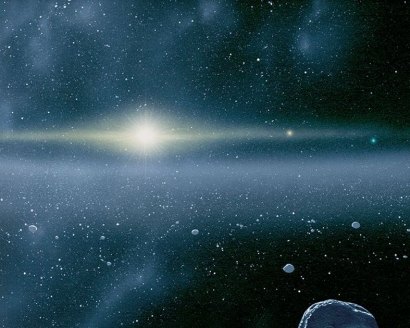Hubble to search outer reaches for mission

An artist's conception of the Kuiper Belt, a debris field of icy bodies left over from the solar system's formation. Image: NASA.
The planned search will target a small area of sky in search of a Kuiper Belt object for the spacecraft to visit. The Kuiper Belt is a vast debris field of icy bodies left over from the solar system's formation 4.6 billion years ago. A Kuiper Belt object has never been seen up close because the belt is so far from the sun, stretching out to a distance of 5 billion miles into a never-before-visited frontier of the solar system.
The space telescope will scan an area of sky in the direction of the constellation Sagittarius to identify objects orbiting within the Kuiper Belt. To distinguish between a foreground object and the clutter of background stars in Sagittarius, the telescope will turn at the predicted rate that Kuiper Belt objects are moving against the background stars. In the resulting images, the stars will be streaked, but any objects should appear as pinpoints.
If the test observation identifies at least two objects of a specified brightness, it will show that Hubble has a chance of finding an appropriate object for New Horizons to visit. At that point, additional time will be allotted to continue the search.
Astronomers around the world apply for observation time on the Hubble Space Telescope. Competition for time on the telescope is extremely intense, and the requested time significantly exceeds the observing time available in a given year. Proposals must concern significant astronomical questions that can only be addressed with Hubble's unique capabilities and are beyond the technology of ground-based telescopes.
The proposals are peer-reviewed annually by an expert committee, which looks for the best possible science that can be conducted by Hubble and recommends to the Space Telescope Science Institute director a balanced program of small, medium and large investigations.
Though Hubble is powerful enough to see galaxies near the horizon of the universe, finding a Kuiper Belt object is a challenging needle-in-haystack search. A typical object along the New Horizons trajectory may be no larger than Manhattan Island and as black as charcoal.
Related:

